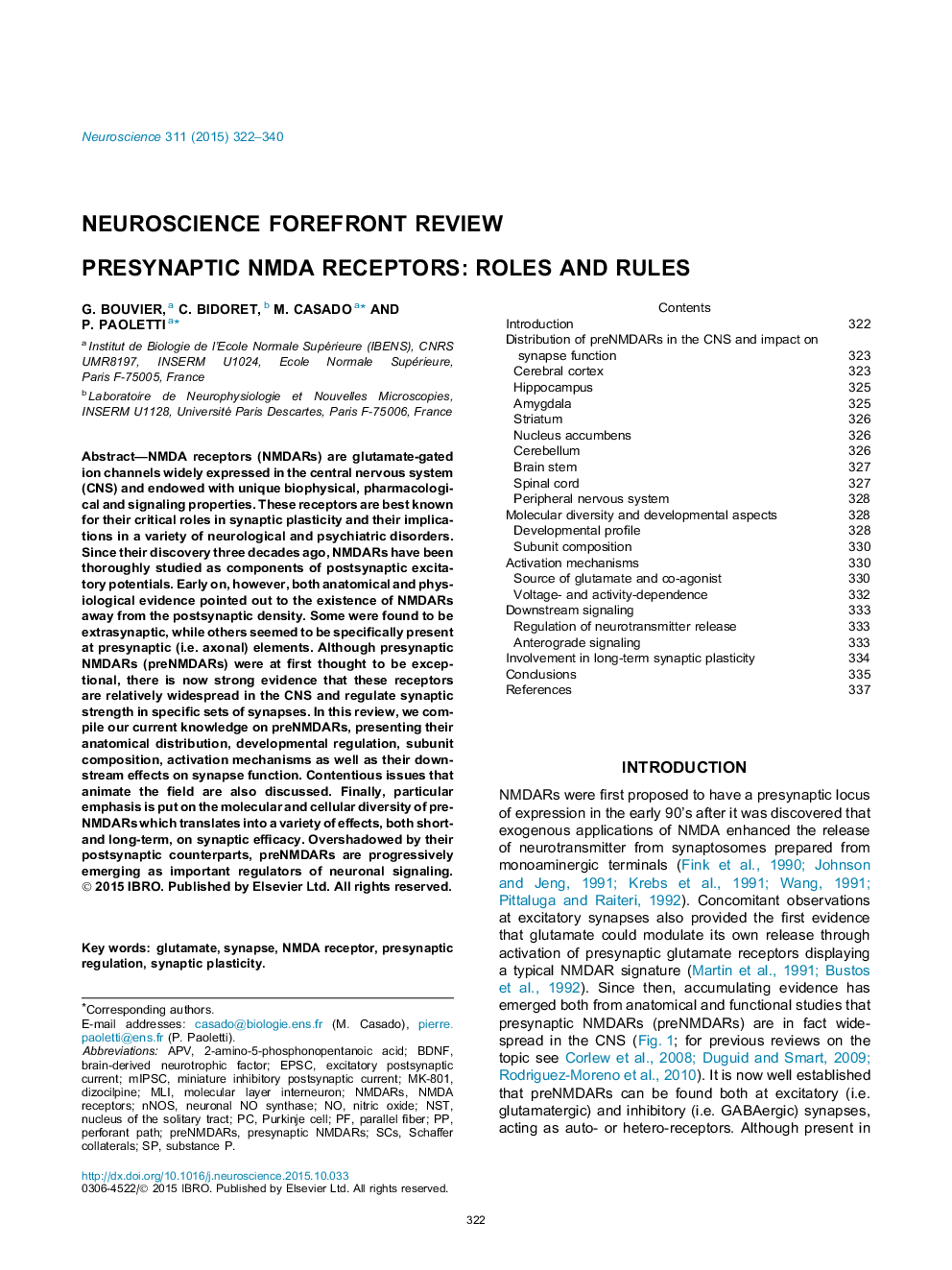| Article ID | Journal | Published Year | Pages | File Type |
|---|---|---|---|---|
| 6271620 | Neuroscience | 2015 | 19 Pages |
Abstract
NMDA receptors (NMDARs) are glutamate-gated ion channels widely expressed in the central nervous system (CNS) and endowed with unique biophysical, pharmacological and signaling properties. These receptors are best known for their critical roles in synaptic plasticity and their implications in a variety of neurological and psychiatric disorders. Since their discovery three decades ago, NMDARs have been thoroughly studied as components of postsynaptic excitatory potentials. Early on, however, both anatomical and physiological evidence pointed out to the existence of NMDARs away from the postsynaptic density. Some were found to be extrasynaptic, while others seemed to be specifically present at presynaptic (i.e. axonal) elements. Although presynaptic NMDARs (preNMDARs) were at first thought to be exceptional, there is now strong evidence that these receptors are relatively widespread in the CNS and regulate synaptic strength in specific sets of synapses. In this review, we compile our current knowledge on preNMDARs, presenting their anatomical distribution, developmental regulation, subunit composition, activation mechanisms as well as their downstream effects on synapse function. Contentious issues that animate the field are also discussed. Finally, particular emphasis is put on the molecular and cellular diversity of preNMDARs which translates into a variety of effects, both short- and long-term, on synaptic efficacy. Overshadowed by their postsynaptic counterparts, preNMDARs are progressively emerging as important regulators of neuronal signaling.
Keywords
NSTmIPSCNMDARsmolecular layer interneuronSCsMK-801APVnNOS2-amino-5-phosphonopentanoic acidBDNFEPSCNMDA receptorMLIPresynaptic regulationminiature inhibitory postsynaptic currentexcitatory postsynaptic currentdizocilpinePurkinje cellSchaffer collateralsBrain-derived neurotrophic factorparallel fiberSubstance PPerforant pathNeuronal NO synthaseNitric oxidenucleus of the solitary tractSynapseSynaptic plasticityglutamateNMDA receptors
Related Topics
Life Sciences
Neuroscience
Neuroscience (General)
Authors
G. Bouvier, C. Bidoret, M. Casado, P. Paoletti,
